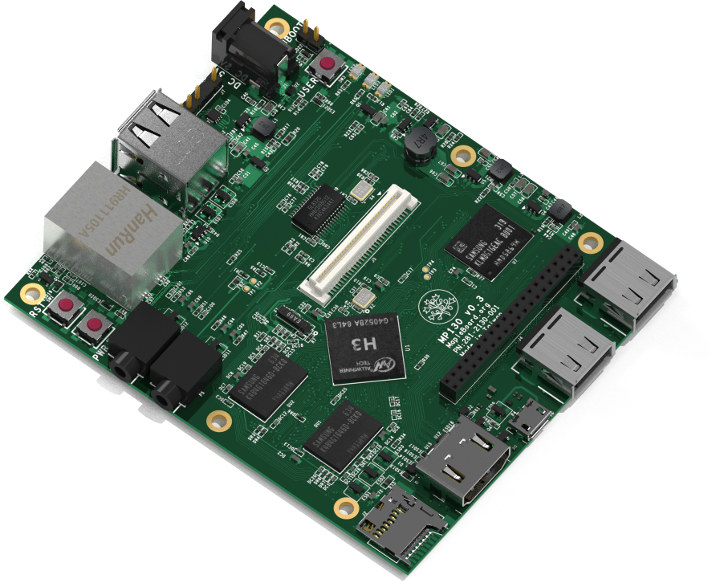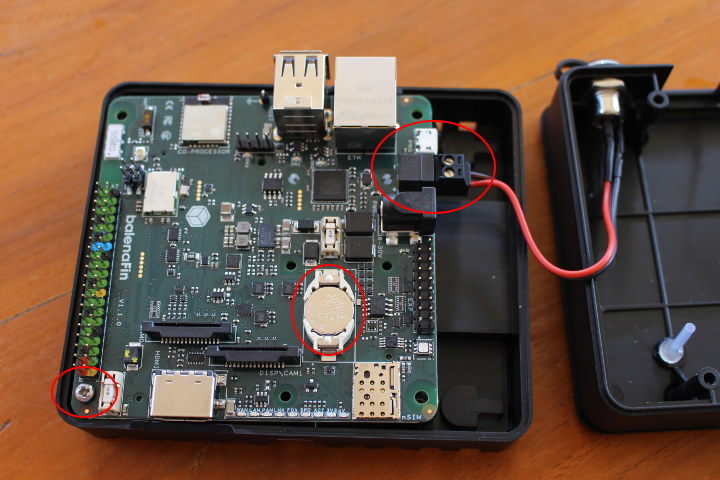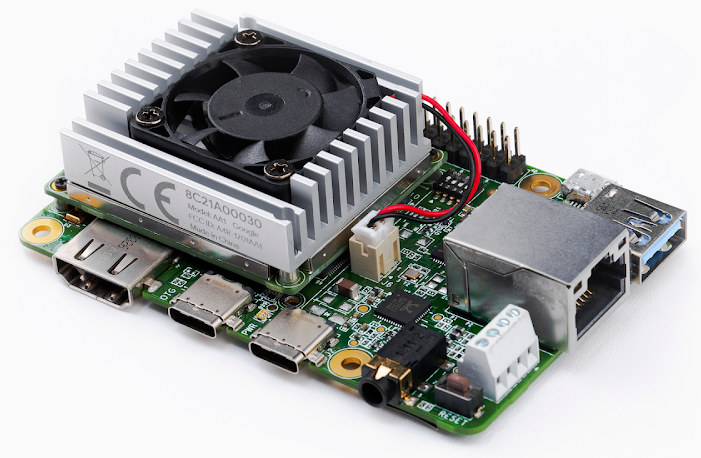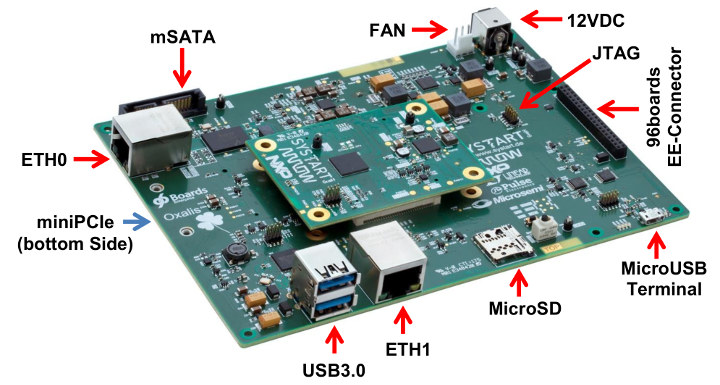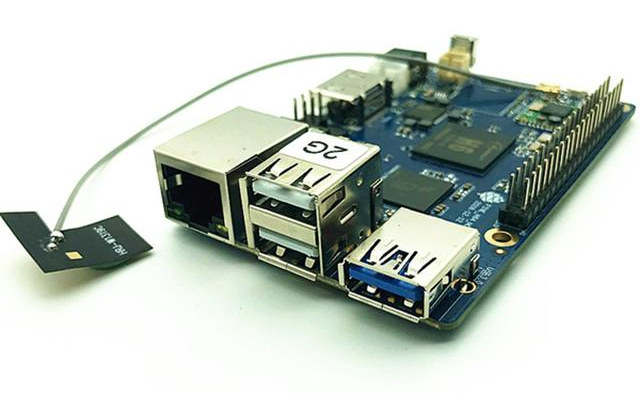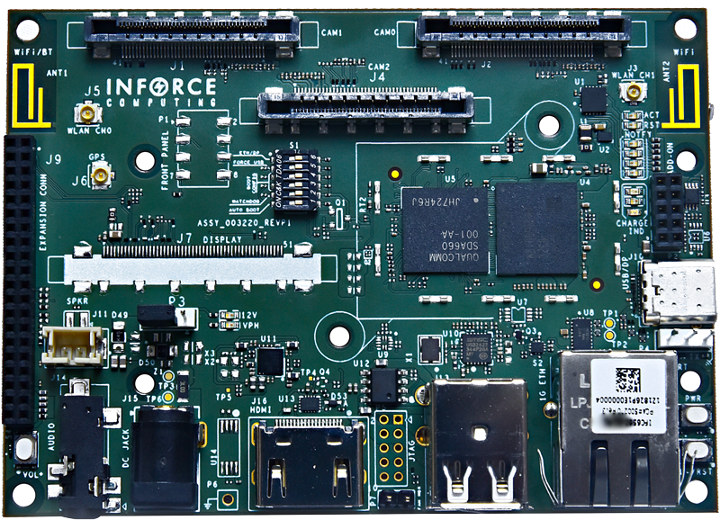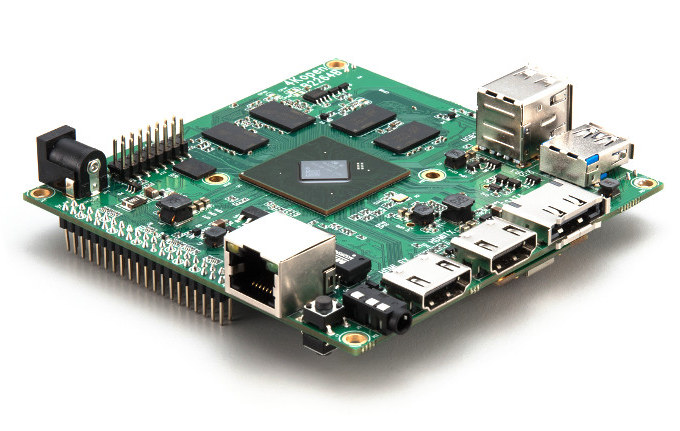Maru OS was first unveiled in 2016 as a smartphone operating system that relies on Android on the go, and Debian while connected to an HDMI display, and Bluetooth keyboard and mouse. The downside was that it only works on Nexus 5 at the time, but Preetam D’Souza open sourced his solution, and more people joined the project to expand the number of supported hardware platforms. I had not heard about the project for a while, but Maru 0.6 Okinawa has just been released with the three main changes being the switch from Android 6.0.1 AOSP to a custom version of LineageOS based on Android 8.1.0 to support a broader range of devices, the upgrade from Debian 8 to Debian 9, and support for wireless desktop streaming meaning you don’t need a phone with HDMI / MHL support anymore. The reliance on AOSP meant Maru used to only work on […]
MapleBoard MP130 Allwinner H3 Board Almost Follows 96Boards CE Extended Form Factor
There are so many Allwinner H3 SBCs or development boards that new ones are often uninteresting, but with the release of Linux 5.0, I discovered a new board that I had never heard of: MapleBoard MP130. The board is equipped with 1GB RAM, Fast Ethernet, four USB ports, and various I/O expansion headers. But the form factor looked familiar, and it seems compliant with 96Boards CE Extended, except for some reasons they decided to swap the low speed and high speed connectors, so I doubt the board is compatible with any of the 96Boards mezzanines. MapleBoard MP130 specifications: SoC – Allwinner H3 quad core Arm Cortex-A7 processor at up to 1.3GHz with Mali-400MP2 GPU System Memory – 1GB DDR3L 1600 MHz Storage – 8GB eMMC 4.41 flash, microSD slot Video Output – HDMI 1.4 output with HDCP1.2 Connectivity – 10/100Mbps Ethernet Audio 2-ch 92dB ADC, 2-ch 100dB DAC, I2S/PCM Interface, […]
balenaFin Developer Kit Review – Part 1: Unboxing and Assembly Instructions
Balena launched balenaFin 1.1 at the end of last month. The board is a professional carrier board for Raspberry Pi Compute Module 3 / 3+ Lite that includes support for variable voltage power input, optional PoE, industrial eMMC flash storage, a real-time Arm Cortex-M4 core via Artik-020 module, and more. Somehow a balenaFin 1.1 developer kit ended up in my home, and I’ll play with it in several weeks, but in the first part of the review, I’ll just check out the content of the package, and show how to assemble the kit. BalenaFin 1.1 Developer Kit Unboxing The local courier brought a largish balena Fin package. which contained a smaller balenaFin package, and the actual developer kit. Everything is nicely packaged in the box with the part related to power supply in a white box, a small opening for smaller accessories and Raspberry Pi Compute Module 3, as well […]
Google to Launch Edge TPU Powered Coral Development Board and USB Accelerator
Several low power neural network accelerators have been launched over the recent years in order to accelerator A.I. workloads such as object recognition, and speech processing. Recent announcements include USB devices such as Intel Neural Compute Stick 2 or Orange Pi AI Stick2801. I completely forgot about it, but Google also announced their own Edge TPU ML accelerator, development kit, and USB accelerator last summer. The good news is that Edge TPU powered Coral USB accelerator and Coral dev board and are going to launch in the next few days for respectively $74.99 and $149.99. Coral Development Board Coral dev board is comprised of a base board and SoM wit the following specifications: Edge TPU Module SoC – NXP i.MX 8M quad core Arm Cortex-A53 processor with Arm Cortex-M4F real-time core, GC7000 Lite 3D GPU ML accelerator – Google Edge TPU coprocessor delivering up to 4 TOPS System Memory – […]
Oxalis 96Boards Enterprise Edition Board Targets Low Power IoT and Networking Applications
Most 96Boards on the market follow 96Boards Consumer Edition (CE) specification, and while 96Board Enterprise Edition (EE) specification was first announced in 2015 we had yet to have a board available for purchase after previous failed attempts with AMD Opteron (Arm Cortex-A57) powered Cello board. But there’s finally a 96Board Enterprise Edition available today thanks to Systart Oxalis board powered by NXP LayerScape LS1202 Cortex-A53 processor with a packet accelerator, designed for low power IoT and networking applications, and following 96Boards EE “standard” form factor. Systart Oxalis key features and specifications: SoC – NXP Layerscape LS1012A single core Arm Cortex-A53 processor with hardware packet forwarding engine System Memory – Up to 3GB RAM Storage – 64MB SPI Flash for bootloader and RCW, MicroSD Card slot, 1x mSATA connector Networking – 2x Gigabit Ethernet ports (RJ45) USB – 2x USB 3.0 ports Expansion 40-pin low speed (LS) expansion connector with +1.8V, […]
PINE H64 Model B SBC Launched with Raspberry Pi Form Factor
Pine H64 development board was introduced about a year ago with an Allwinner H6 processor, 1 to 3GB RAM, Gigabit Ethernet, a USB 3.0 port, a PCIe socket, and more with the legacy Pine A64 form factor and price starting at $25.99 for the 1GB RAM version. However, Pine64 made a few announcements at FOSDEM 2019, and beside the upcoming Pinebook Pro Linux/*BSD laptop, the company also mentioned a new PINE H64 Model B, still based on Allwinner H6 processor, but instead following Raspberry Pi form factor also used by the company’s Rock64 SBC. The new board is still not available on the official Pine64 store, but Ameridroid is already taking orders for Pine H64 Model B for $38.95 (2GB RAM) and $48.95 (3GB RAM). Pine H64 Model B specifications: SoC – Allwinner H6 quad-core Arm Cortex-A53 processor @ 1.8GHz with Arm Mali T-722MP2 dual-core GPU supporting OpenGL ES 3.1/3.0/2.0/1.1, […]
Inforce 6560 Snapdragon 660 Pico-ITX SBC Comes with 3 MIPI Camera Connectors
Inforce Computing has launched yet another Snapdragon-based single board computer with their Inforce 6560 SBC powered by Qualcomm Snapdragon 660 processor with stereoscopic depth sensing and deep learning capabilities made possible thanks to three MIPI camera connectors. The board also comes with to 3GB LPDDR4 RAM, 32GB flash, HDMI and MIPI DSI video outputs, Gigabit Ethernet, a wireless module, USB ports, sensors, and more. Inforce 6560 specifications: SoC – Qualcomm Snapdragon 660 (SDA660) with 8x Kryo ARMv8 compliant 64-bit CPUs arranged in two dual-clusters, running at 2.2GHz (Gold) and 1.8GHz (Silver) each, Adreno 512 GPU, Hexagon 680 DSP with dual-Hexagon vector processor (HVX-512) @ 787MHz for low-power audio and computer vision processing, Spectra 160 camera (dual) Image Signal Processors (ISPs) System Memory – 3GB onboard LPDDR4 RAM Storage – 32GB eMMC flash, 1x µSD card v3.0 socket Video Output / Display Interface HDMI V1.3a FullHD @ 60fps port 4-lane MIPI-DSI with […]
4Kopen UHD Video Development Platform Features STMicro STiH418 Media Processor
Back in 2016, I read news about STMicro exiting the set-top box chipset market, so I just assumed all their STiHxx processors would be phased out, and I was surprised to come across 4Kopen, described as an open 4K UHD video development platform powered by STMicro STiH418 media processor, especially it was just showcased at 2019 Integrated Systems Europe (ISE 2019) at the beginning of the month. The development board comes with 2 GB RAM, HDMI 2.0 output, HDMI 1.4 input, Gigabit Ethernet, USB 3.0, a mini PCIe slot fitted with an 802.11b/g/n WiFi module, an eSATA connector and more. 4Kopen (B2264) hardware specifications: SoC – STMicro STiH418 quad-core Arm Cortex-A9 processor @ 1.2 GHz, quad-core Mali-400 GPU, and 4x ST231 DSP (Each Core Quad issue) @ 650 MHz System Memory – 2 GB DDR3 @ 2133 MHz Storage – micro SD socket, eSATA port Video & Audio I/O Output […]



